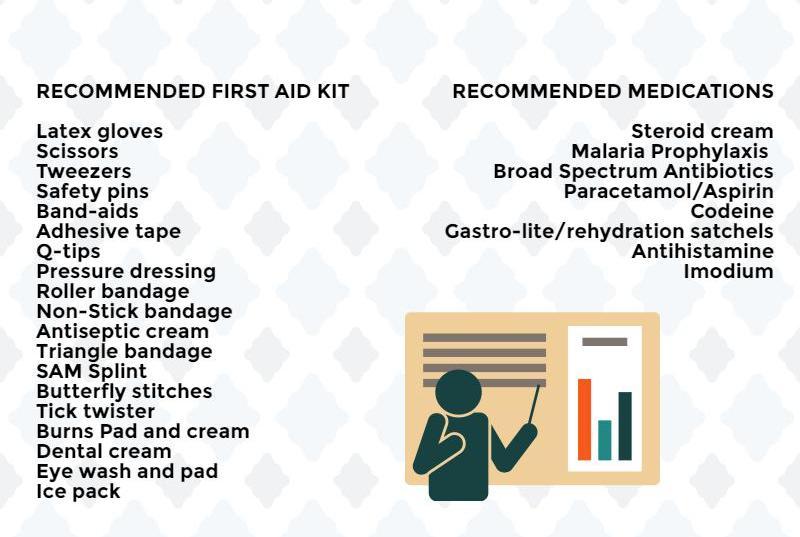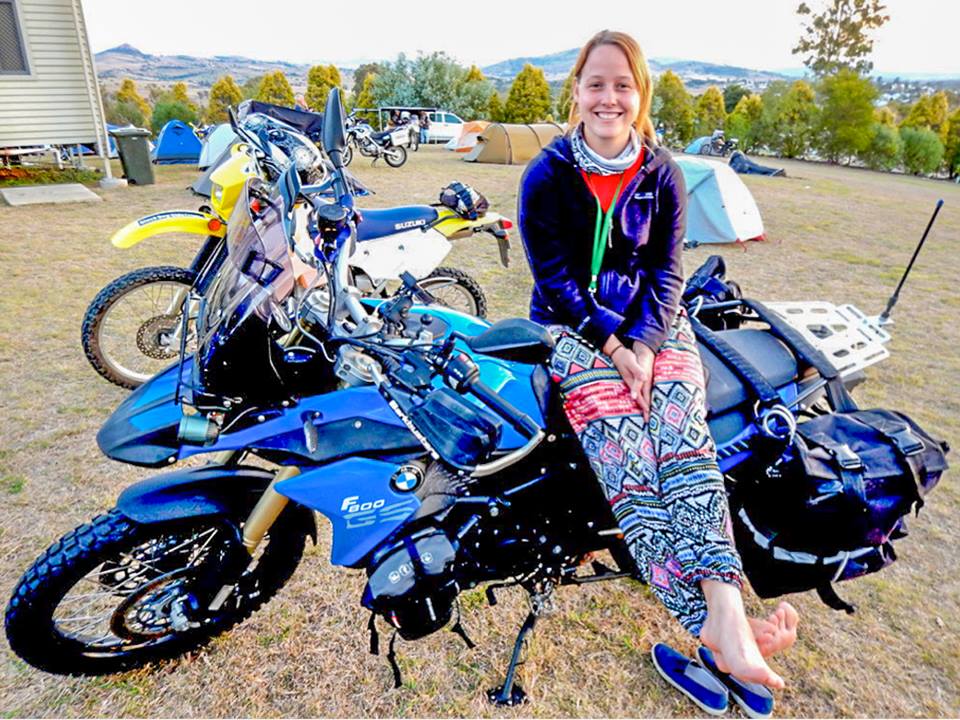
First Aid: Motorcycle Emergencies
BY GEORGIA MELVILLE
As a paramedic, I am used to turning up the scene of an accident after it has happened. The initial shock of the scene is over, and everyone is ready for you to do your thing. But there has been that occasion where friends or other road users have had an accident right in front of me, and I have felt that initial burst of adrenaline and helplessness. So here is a quick guide to get you on the right track when it comes to being “first on scene” at an accident.
Firstly, hands up who has an up to date first aid course. Well, okay, maybe you have one from 5 years ago, but it is important to know that things change. It is recommended that you update your course every 3 years to keep current. And sure it is great if you have your certificate, but what about your riding buddies or partner in crime? It won’t be much help if you are only one who has a current certificate and you end up in an accident. Some first aid providers offer group discounts, so get on to your friends and convince them so that you are protected too. There are even specific “motorcycle first aid” courses out there if you wanted to go that one step further.
So what to do first?
Breathe! I know this sounds simple, but seeing your best mate involved in a crash is absolutely terrifying. They need you the most right now and the calm and organized version of you so that they feel safe and taken care of. Make sure that you are safe and out of any danger and then check go to them and do the same. Things like fast moving traffic, accidents on corners, fallen power lines, fuel leaking from the motorcycle and steep embankments should all be considered. If there are bystanders around get them to call for help. Depending on which country you are in, you will need to know the local phone number for Ambulance, Police, and the Fire Brigade. It also helps to know a few basic words in the local language to prompt the call-taker. Bystanders are also great at directing traffic which keeps you and the injured person safe.
Check the injured person for a response. Usually, you will hear lots of swearing, or they will be asking you “how is my bike, ” but on the odd occasion, they will be unconscious. Look at the patient’s color and check if they are breathing. Now it is all well and good to follow this algorithm, but what if they have a helmet on? There are so many different types of helmets these days that do a lot of weird and wonderful things but as a blanket rule, if their airway is compromised, remove the helmet. There are many different ways people teach this technique but if you can do it without much movement of the head and neck you are on the right track. If you have time, practice this at home as there is definitely a knack to it. If however they are conscious and breathing it is not advisable to remove the helmet. Keep the person in a comfortable position with the least amount of movement until emergency crews arrive.
Be prepared
In the meantime, having a first aid kit where you can patch up the victim is helpful. A quick Google search of motorcycle first aid kits will give you a thousand different products to look at. The best first aid kits are the ones that you have with you and that you are comfortable using. Apart from all the basic first aid equipment supplied in the kits, there are a few extra things that you may want to consider getting depending on the country that you are traveling through and the length of time away. Going to your local GP and ask for some broad spectrum antibiotics will come in handy if you pick up a bacterial infection of any kind. Some countries you can buy antibiotics over the counter without a prescription so it is good to do some research beforehand. Making sure you are up to date will all your vaccinations and that you get the appropriate extra ones depending on whichever countries you are traveling through. Some other extra bits and pieces include malaria tablets, water purification tablets and some good quality mosquito repellent.
If you are in a remote area or are a solo adventurer, it is sensible to carry some form of an emergency beacon which can get you out of trouble. There are many out there on the market but they all do roughly the same job. There have been many times where I have had to respond to an activated beacon and it has no doubt saved that person’s life. There are also lots of success stories out there on the net if you need some more convincing.
Having good health cover and travel insurance in the country you are traveling through is so important. Check to make sure that your policy covers you for motorcycles over 250cc if that is what you are riding. Horizons Unlimited is an unbelievable website that will give you everything you need to know about this topic and more. Specifically designed for overland traveler’s it has a wealth of knowledge, connecting you with other traveler’s and give you the confidence to get out there and explore the world.

ABOUT THE AUTHOR:
Georgia (24) is a full-time Paramedic with the Ambulance Service of NSW, Australia. She completed a Bachelor degree in Paramedicine through Charles Sturt University and went on to specialize with a Postgraduate in Intensive Care. She also works with private tour companies operating as a medic and exploring both Australia and overseas. Georgia is following her dreams at an early age in life exploring the world solo on her adventure bike. A recent trip from Scotland to North Africa and back humbled her by the kindness of humanity and opened her eyes as to what the world can offer if you are open to it. Looking to motivate and inspire others, she has spoken publicly at many adventure travelers meeting and we are happy to have her here at Women ADV riders!


4 comments
It is also worth mentioning that different countries have different recommendations on what to do in an emergency.
This is a great article and well written by Georgia. As a Paramedic Educator, guest speaker and a full range of other things, I am based in Western Australia and I provide specific “motorcycle first aid” training – Rider Down. I would like to emphasise that ‘generic’ first aid courses do not teach skills required for a rider down situation, which is why it is strongly advisable for motorcyclists to seek out a motorcycle specific course conducted by a qualified educator. The skill of helmet removal (1 person or 2 person technique) for example is one that needs practice to ensure a good outcome. As Georgia said, if their airway is compromised, remove the helmet. This is also only true for full face helmets or for a modular helmet that you would have difficulty opening (they are not always easy).
More importantly however, is the critical lifesaving skill of major bleeding control by use of haemostatic dressings and tourniquets. Did you know that you can die within 3-5 minutes from major bleeding? Did you also know that that major blood loss is the second leading cause of death for people injured in the prehospital environment. 30% of injuries that occur to the rider down, occur to the extremities (Legs + Arms) and often result in major blood loss. Unfortunately, an ambulance will NOT get to you quick enough to save your life.
It will be the right training with the right equipment (commercial tourniquet + haemostatic dressing) that will save lives.
Note**** this is not meant to be a plug but will help individuals seek out the right training.
The USA Department of Homeland Security released “Stop the Bleed” which is a nationwide campaign to empower individuals to act quickly and save lives.
https://www.dhs.gov/stopthebleed
Rider Down incorporates ‘Stop the Bleed’ training in Australia which meets current resuscitation guidelines (ARC) and is licensed by the US Department of Defence, Homeland Security.
https://www.facebook.com/RiderDownTraining
I will add on to the “Stop the Bleed” theme and suggest for those riders that are traveling to remote areas, they consider carrying a few items that we use in tactical medicine to treat life threatening injuries at “the point of wounding”. Twenty years ago the military (USA) did a study to classify what types of wounds were killing soldiers on the battlefield, and of those fatal wounds, were any of those preventable deaths IF treated immediately. As mentioned in the previous comment, the biggest cause of death that could be treated in the field was severe bleeding from an extremity wound. This led to the reintroduction of the tourniquet (commercial, not improvised) as a way to control bleeding. The other preventable deaths were airway problems and penetrating trauma (I.E. gun shot wounds) to the chest/torso resulting in a sucking chest wound and/or a tension pneumothorax. While I realize we are talking here about injuries that may occur while riding our adventure bikes and not GSW’s, a severe crash can cause the same type of injuries.
The ‘first aid’ supplies carried by all military and tactical law enforcement (my area of expertise) are tourniquets (CATs or SOFTT-W), hemostatic agents (Combat Gauze) for wound packing…i.e. treating bleeding in areas of the body you can’t apply a tourniquet, and commercial chest seals for penetrating trauma to the chest. These are the medical supplies that should be carried and are needed to treat injuries that won’t wait for an ambulance to arrive. (There are more, but I’ll stop there). If any of this interests any of the readers of this web site, I suggest you google Tactical Combat Casualty Care (TCCC) and you can find loads of information including online videos on how to do all of this stuff. It goes without saying, training and professional instruction can make you much more prepared to deal with medical emergencies in the field.
My background includes being a professional tactical paramedic and instructor for over 25 years as well as an adventure rider. I too have taught motorcycle emergency classes with a particular focus on decision making processes for injuries that occur in remote parts of the world, and the group needs to decide if they need to wait for emergency evacuation for the injured rider (maybe for days), or if the rider can assist with his/her own rescue.
Glad to see this discussion get started. If I can be of any assistance in specific supplies to carry or anything else, please let me know.
Cheers,
Bill
[…] Knowing first aid and having a first aid kit, including some basic medications like antihistamines and paracetamol, is also a good idea. For more first-aid advice and a first aid packing list, check out this article by Georgia Melville, and Australian rider and paramedic: First Aid Motorcycle Emergencies. […]